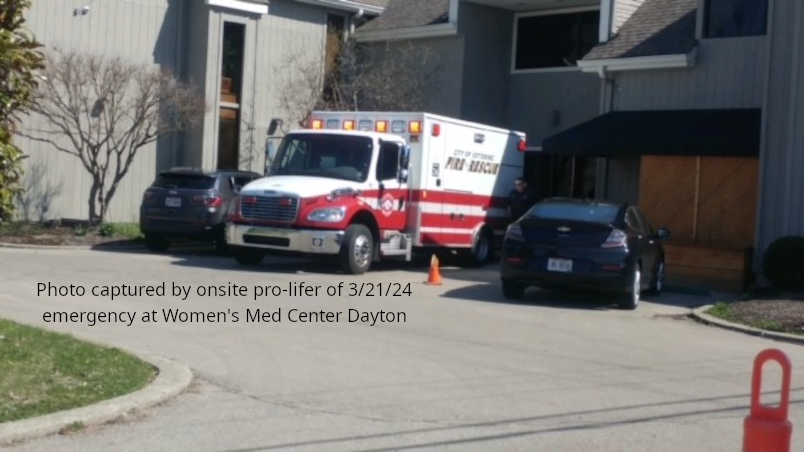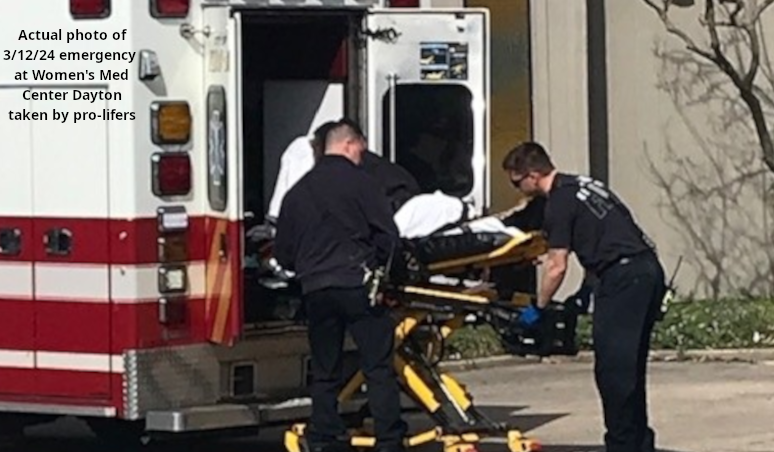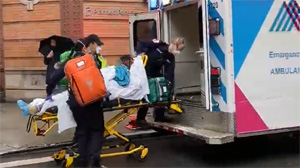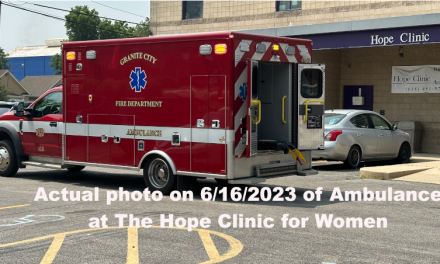By Anne Reed
Oxygen Deprivation, Loss of Consciousness, Seizure
In March 2024, two emergency transports were documented at Women’s Med Center of Dayton, located in the suburb of Kettering. An employee by the name of Leah called 911 on March 12, at about 3:30 p.m. She reported that, following a suction abortion, the woman experienced an abrupt drop in hemoglobin and syncope upon standing. In other words, she could not stand up without a sudden loss of consciousness.
The caller stated there was “no obvious hemorrhage.” However, when a sudden, drastic drop of hemoglobin occurs after surgery, it is normally due to anemia resulting from an abrupt, large volume of blood loss. This can cause serious health issues, including a heart attack or kidney failure. Such a patient may need oxygen and blood transfusion(s). It is important to diagnose this form of acute anemia quickly because it is potentially life threatening.
A lower-than-normal hemoglobin count means the body is not getting enough oxygen. Hemoglobin, a protein that facilitates the transport of oxygen throughout the body, should be 12-15 g/dL for an adult female. A pregnant female’s hemoglobin levels are typically lower but should still be above 10. This woman’s numbers dropped suddenly from 10 to 6.
This late-term abortion facility is known for minimizing serious injuries, continuously referring to them as “non-emergent.” This call was no different.
After relaying the information about the patient’s condition, Leah said, “It can be non-emergent transport.”

Just nine days later, another call was made to 911 on March 21, at about 12:15 p.m. The call was brief, and the employee responded to the dispatcher’s question by quickly stating that a patient “keeps repeatedly having a seizure.”
The dispatcher only asked if the patient was conscious without inquiring or securing important information about vital signs to assess what type of emergency intervention might be required of the paramedics.
Dispatch services also typically ask questions to determine the possible cause of a seizure – at least whether the seizing patient has a history of epilepsy. It is not known whether the patient was experiencing a seizure as a result of a surgical abortion. Such a complication could arise from a drug allergy, an overdose of anesthesia, or other abortion-related injuries.
“This abortion mill has a long history of twisting the truth and downplaying life-threatening injuries,” said Operation Rescue President Troy Newman. “Not only are these clear examples of the callousness and carelessness this facility is known for, but they are also accounts of incredibly misguided mothers who must have thought it was a reasonable solution to end the lives of their innocent children. They surely had no idea of the looming danger inside the killing center. We can only imagine the fear and remorse they experienced for trusting the abortionists and staff at this killing center with their wellbeing.
“And though we do not know the outcome of their injuries, we pray they survived. We also pray that, as they inevitably experience heartache and regret, they will humbly turn to God and receive the gift of forgiveness and healing, spending the rest of their days doing good.”






